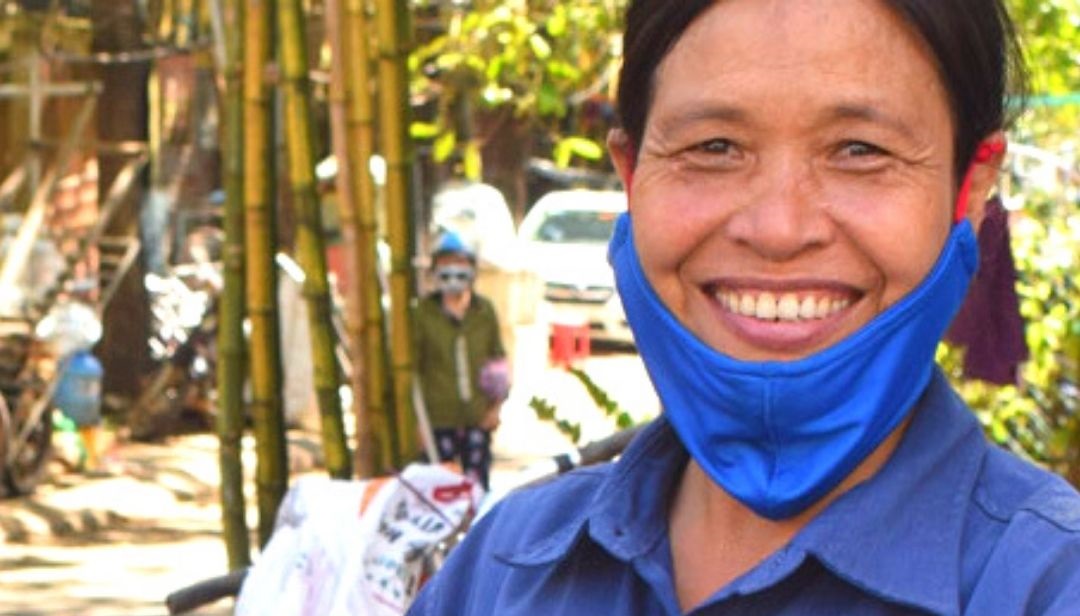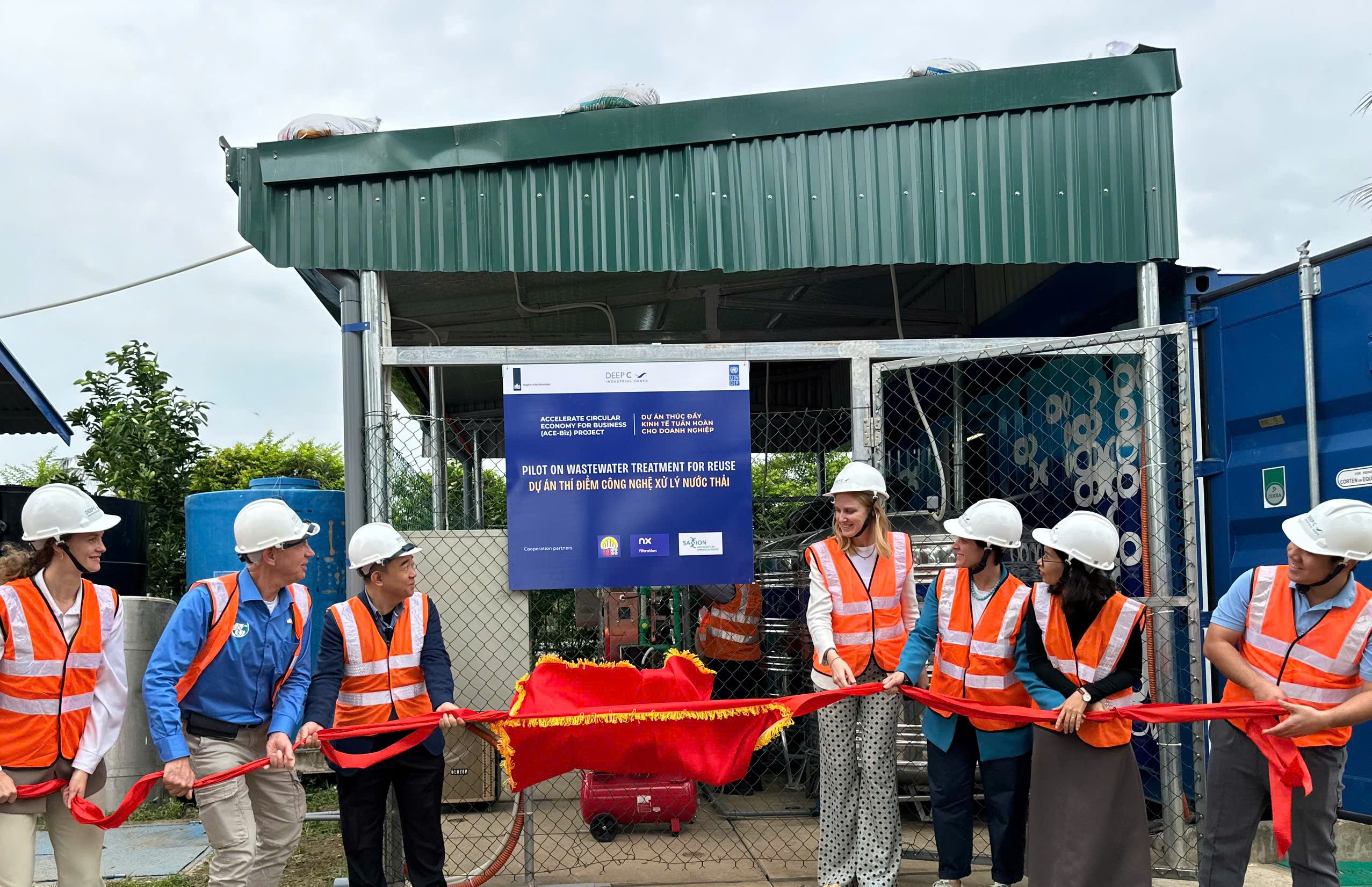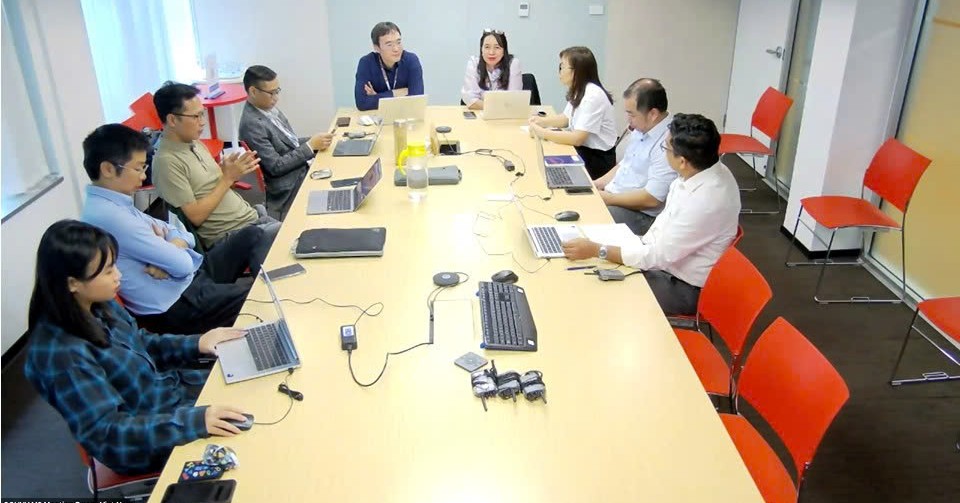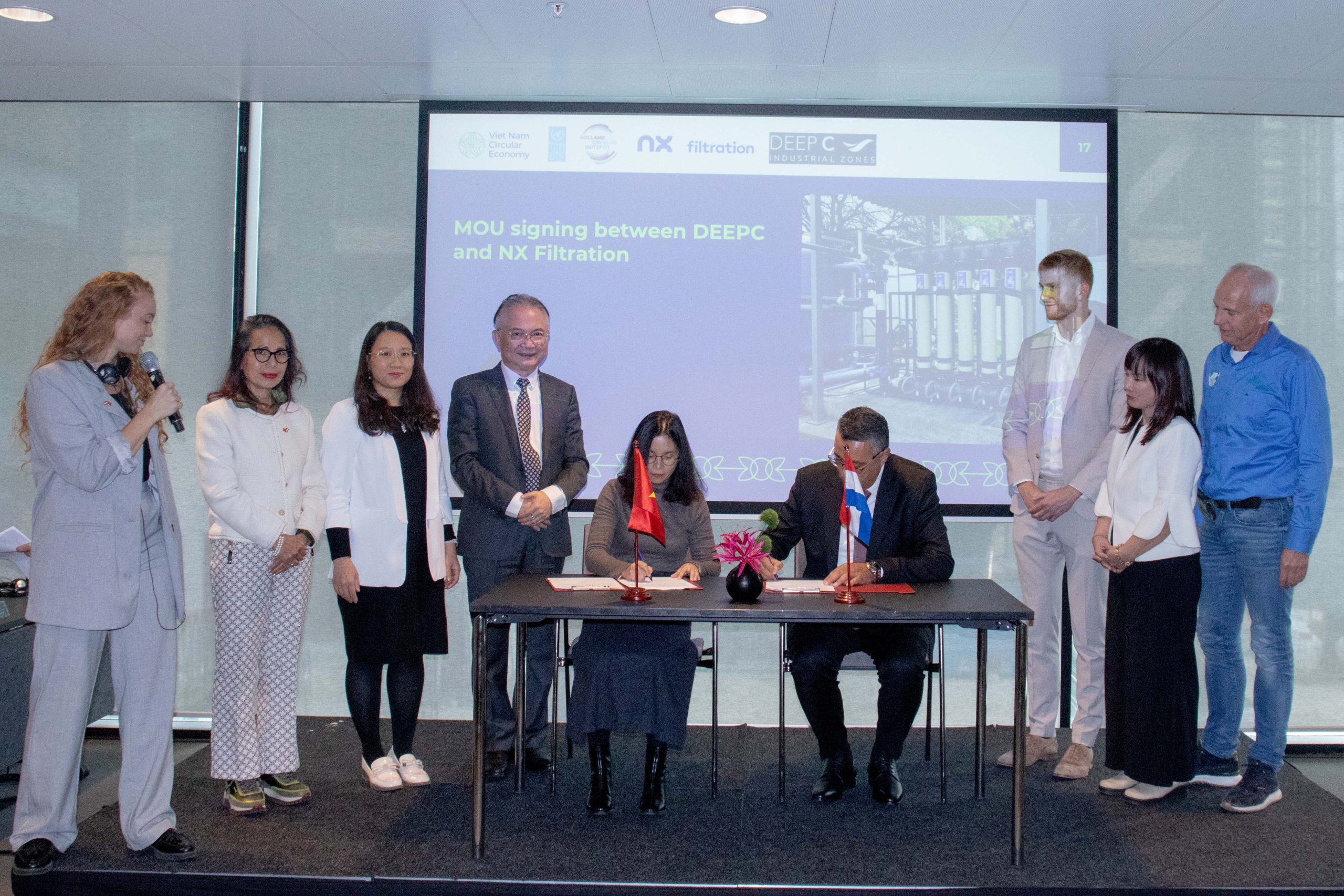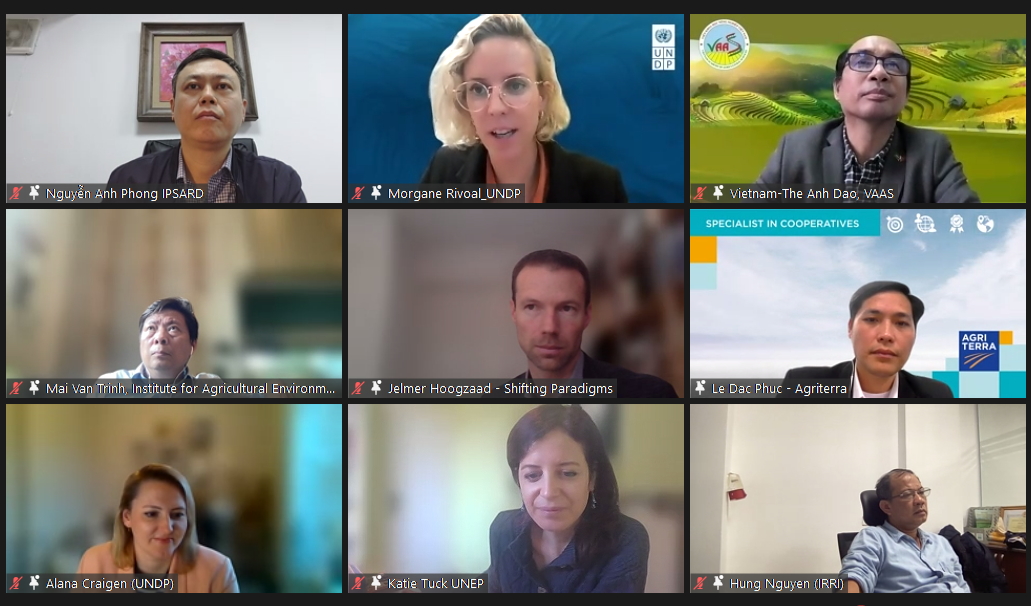
The Circular Economy (CE) – Nationally Determined Contributions (NDC) Toolbox is available here .
Access all presentations and the executive summary of the CE-NDC Toolbox here .
On January 16, 2024, UNDP hosted an online consultation workshop titled “Boosting NDCs’ Ambitions Through Circularity in the Agricultural Sectors – Introducing the CE-NDC Toolbox ” which brought together over 70 participants representing academic institutions, research organisations, NGOs, and government agencies.
CE was initially introduced in the Revised Law on Environmental Protection (LEP) 2020 and Decree 08, emphasising three key principles:
- Reduce exploitation and use of non-renewable resources and water resources; increase efficiency in the use of resources, raw materials and materials; energy saving
- Extend the use time of materials, equipment, products, goods, components and components,
- Limiting waste generation and minimising adverse impacts on the environment, including reducing solid waste, wastewater, emissions; reduce the use of harmful chemicals; waste recycling, energy recovery; reduce single-use products; green shopping
By adopting CE practices, actors in the agro-value chains will also generate greenhouse gases emission reduction, thereby serving the objectives laid out in Viet Nam’s Nationally Determined Contributions (NDC) in addition to numerous other benefits such as limiting waste generation and reducing the exploitation of natural resources, stipulated in the draft NAP on CE. In this connection, the consultation workshop explored the potential of CE practices for enhancing Viet Nam’s NDCs in agriculture.
Mr. Dao Xuan Lai, (UNDP) opened the workshop, highlighting the crucial role of CE in achieving ambitious climate goals, in addition to its potential for waste reduction and jobs creation.
Dr. Nguyen Anh Phong, Deputy Director General of the Institute of Policy and Strategy for Agriculture and Rural Development (IPSARD) provided an overview of Viet Nam’s existing CE policies in agriculture and IPSARD’s relevant work, which includes their development of a draft plan specifically focusing on CE in the agricultural sector.
PRESENTATIONS
Jelmer Hoogzaad , founder of Shifting Paradigm and a contributor to the CE-NDC Toolbox , commenced the session by guiding participants through the toolbox’s four key steps: 1-Assessing the problem with available data, 2-Defining the circular economy policy response, 3-Implementing CE for the NDC, and 4-Tracking and reporting progress in the Biennial Transparency Report. Additionally, he underscored the significance of data collection in informing policy-making processes and provided an illustrative example of the metabolic study conducted in Thue Thien Hue province, emphasising its role in guiding potential CE interventions and predicting their impacts.
Dr. Mai Van Trinh , Director of the Institute for Agricultural Environment, explored the potential of applying the toolbox in Viet Nam’s context. By applying CE practices to animal wastes and crop residues, the country could reduce 7.6 million tonnes CO2e and sequester 22 million tonnes CO2e from here to 2030.
Dr. Dao The Anh – Deputy Director, Viet Nam Academy of Agricultural Sciences – highlighted key opportunities to boost circularity in the agricultural sector in Viet Nam such as waste valorisation, closed-loop supply chain integration, acceleration and uptake of technologies and enhanced/ harmonised policy frameworks . He also acknowledged challenges that hinder the adoption of CE such as limited awareness, insufficient limited knowledge and capacity of farmers, and a nascent policy framework for organic fertiliser production.
Dr. Nguyen Van Hung , International Rice Research Institute (IRRI), showcased RiceEco , a circular project focused on valorising rice straws. By mechanising the collection process and utilising straw for mushroom cultivation, ruminant feed, or composting, the project offers sustainable alternatives to straw burning, reducing human toxic substances and GHG emissions released to the environment.
Mr. Pham Thanh Nam , SNV Netherlands, showcased how coffee pulp can be used for high-value Cascara tea , generating additional income for farmers. Additionally, intercropping with persimmon and macadamia provides mulch and organic matter, enriching soil fertility. He also mentioned the use of QR codes on final products to improve traceability and transparency throughout the coffee value chains.
Mr. Le Dac Phuc , Agriterra, shared the inspiring story of grass-root innovation, Mr. By Xuan Long, a member of the Eakiet cooperative. Through online research and experimentation, Long developed his own biofertilizer using readily available organic waste from local markets, resulting in reduced chemical fertiliser use of 45 percent annually, increased productivity of 50 percent, cost savings of 35 percent, and greenhouse gas emission reductions.
The workshop concluded with a lively discussion centred around the financial gains and emission reduction aspects of the different models such as rice-shrimp farming systems, and composting of rice straws. The session also explored challenges faced by small-scale farmers and enterprises in adopting CE practices and addressed the perception of CE as complex and expensive.
REMARKS
Dr. Phong, IPSARD, acknowledged the usefulness of the CE-NDC toolbox for developing an agricultural circularity road map. He also highlighted challenges stemming from missing indicators for each agricultural sub-sector to assess baselines and potential, the perpetual perception of circularity as complex and expensive for small-scale farmers and enterprises, and the need to enhance inter-sectoral integration and initiatives to reduce emission throughout the value chains, for example, in logistics.
Bui Viet Hien, UNDP in Viet Nam, sees the CE-NDC toolbox as valuable for the next round of updates for NDC, potentially informing both reviews of existing measures and suggestions for new ones, particularly in agriculture. Additionally, research is ongoing to quantify the carbon footprint of the rice-shrimp model and scale up the production of animal feed from shrimp effluents to reduce greenhouse gas emissions in the value chains.
Hoang Thanh Vinh, UNDP in Viet Nam, emphasised the missed opportunity for detailed CE plans in agriculture within the national action plan. He suggested utilising the CE-NDC Toolbox and discussions to create recommendations for MARD to formulate the CE agricultural road map in 2024. Additionally, he highlighted the Ministry of Planning and Investment’s draft decree on regulatory sandbox for the development of CE offered advantages for implementing circular practices in agriculture, encouraging exploration of these opportunities. UNDP involvement underscores their commitment to enhancing circular agriculture alongside relevant ministries.
Looking forward, Alana Craigen, UNDP, informed the launch of Phase 2 from 2024 to 2028, which will incorporate insights gleaned from the workshop to broaden the toolkit, deepen its application in specific sectors like agriculture, and expand pilot testing to additional countries.
KEY TAKEAWAYS
- There is a need for specific circular economy plans in agriculture: While the draft decree on regulatory sandbox for circular economy development formulated by the Ministry of Planning and Investment includes agriculture as one of four focus sectors to pilot circular initiatives, the current draft National Action Plan on Circular Economy lead by MONRE doesn’t yet outline specific plans for circular economy in agriculture. The CE-NDC Toolbox and discussions in the workshop would provide support to MARD as they develop their Action Plan for CE on Agriculture.
- Importance of developing CE and successful case studies: Developing circular economy indicators for each agricultural sub-sector will help develop consistent baseline data and assess their potential. Showcasing successful/ grassroots practices for small-scale farmers and enterprises will help to spread knowledge and facilitate uptake.
- CE transition needs to be considered across the value chains: Circularity encompasses all value chain stages, from production, to transformation, transport, consumption, and waste. For successful implementation, it’s crucial to foster innovation, particularly in applying digital technologies for improved traceability and transparency along the agrifood value chains.
- Support and strengthen farmer cooperatives and knowledge sharing: Working with the well-established Farmer’s group and or cooperatives can foster the exchange and mutual support of tools, techniques, and experiences in implementing circular agriculture. This collaborative approach can also contribute to standardising members’ production processes, ensuring alignment with market expectations and requirements.









